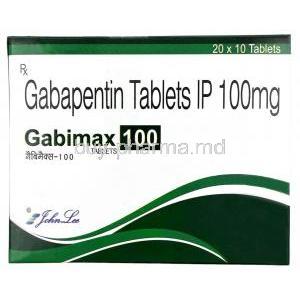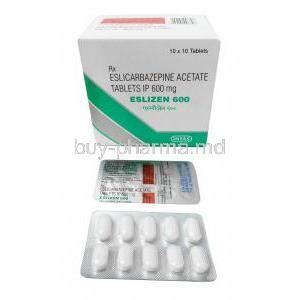I. Introduction to Divalproex Sodium
Divalproex Sodium is a versatile medication primarily utilized in the management of neurological and psychiatric conditions. Its inception into the pharmaceutical market followed extensive research, revealing its potent effects on neurochemical modulation. The medication's significance in modern medicine cannot be overstated, as it provides crucial intervention for epilepsy, bipolar disorder, and migraine prophylaxis.
Overview of the medication
Divalproex Sodium combines the properties of sodium valproate and valproic acid in a stable compound, delivering enhanced therapeutic effects with a reduced gastrointestinal side effect profile. This formulation is pivotal for patients requiring long-term management of their conditions.
Brief history and development
Developed through rigorous pharmacological innovation, Divalproex Sodium emerged as a derivative of valproic acid in the late 20th century. It was engineered to offer better tolerability and consistent absorption rates compared to its predecessors.
Importance in modern medicine
As a cornerstone in the treatment of several chronic disorders, Divalproex Sodium is indispensable. It has revolutionized the approach to treatment-resistant epilepsy and mood disorders, significantly enhancing the quality of life for affected individuals.
II. Composition and Properties
Chemical structure and formula
The molecule of Divalproex Sodium is characterized by a unique arrangement that optimizes the release and absorption of valproate in the body. Its chemical formula, C16H31NaO4, reflects its complex structure that is key to its pharmacokinetics.
Pharmacological classification
Classified as an anticonvulsant and mood stabilizer, Divalproex Sodium operates within these spectra, affecting neurotransmitter pathways to stabilize electrical activity in the brain and improve mood regulation.
III. Therapeutic Uses of Divalproex Sodium
Primary indications
- Epilepsy: Divalproex Sodium is indicated for the treatment of various seizure disorders, including complex partial seizures and simple and complex absence seizures.
- Bipolar Disorder: It is efficacious in reducing the frequency and intensity of mood swings in bipolar disorder.
- Migraine Prevention: Prescribed as a prophylactic treatment to decrease the frequency of migraine headaches.
Summary of clinical guidelines for use
Medical guidelines recommend Divalproex Sodium as a first-line treatment in the aforementioned conditions, advising monitoring of liver function and blood levels due to its potential hepatotoxicity and dose-related toxicity.
IV. Off-Label Uses of Divalproex Sodium
Overview of common off-label applications
While primarily prescribed for epilepsy, bipolar disorder, and migraines, Divalproex Sodium is frequently utilized in managing a spectrum of off-label conditions due to its broad pharmacological effects.
Research and evidence supporting off-label use
- Behavioral Disorders: Studies indicate efficacy in impulse control disorders and certain behavioral syndromes.
- Neuropathic Pain: Emerging research supports its use in the complex management of pain associated with nerve damage.
- Other Psychiatric Conditions: Preliminary trials show promise in treating conditions like PTSD and anxiety disorders.
V. Mechanism of Action
How Divalproex Sodium works in the brain
Divalproex Sodium modulates GABAergic transmission and inhibits sodium and calcium channels, which stabilizes neuronal firing and prevents abnormal electrical activity in the brain.
Impact on neurotransmitters
It enhances the availability of gamma-aminobutyric acid (GABA), a key inhibitory neurotransmitter in the CNS, thus calming hyperactivity in neurological disorders.
VI. Dosage and Administration
Dosage forms available
Divalproex Sodium is available in various forms, including delayed-release tablets, extended-release tablets, and sprinkle capsules, catering to different therapeutic needs and patient preferences.
Recommended dosages for different conditions
Starting doses and adjustments are prescribed based on the condition being treated, patient age, weight, and liver function, among other factors.
Adjustment of doses in special populations
Particular care is necessary when administering to the elderly, children, and those with liver impairment, requiring dose adjustments and close monitoring for efficacy and toxicity.
VII. Administration Guidelines
To Elderly Patients
Administering Divalproex Sodium to elderly patients necessitates heightened vigilance due to an increased risk of systemic accumulation and associated toxicity. Dosage adjustments, based on renal function evaluation and hepatic health, are imperative to mitigate adverse effects. Careful monitoring of therapeutic levels is crucial to optimize treatment outcomes and minimize potential complications.
To Pregnant Women and Nursing Mothers
The administration of Divalproex Sodium during pregnancy and lactation is advised only if the benefits justify the potential risks to the fetus or infant. Given the drug's teratogenic potential, it should be prescribed in these populations only under stringent conditions, and alternative treatments should be considered. When unavoidable, monitoring for developmental milestones and potential drug exposure effects in infants is recommended.
To Children: Age-Specific Considerations
Pediatric administration of Divalproex Sodium demands tailored dosing regimens to align with age-specific metabolic capacities and developmental stages. Safety and efficacy profiles vary significantly across pediatric subgroups, requiring pediatric neurology expertise to guide therapeutic strategies and dose adjustments.
VIII. Side Effects of Divalproex Sodium
Common Side Effects: List and Management
- Gastrointestinal disturbances such as nausea and vomiting can often be managed with dose adjustments or by taking the medication with food.
- Weight gain and tremors may require dietary modifications or addition of adjunct therapies to mitigate their impact.
- Hair loss, a less common side effect, can sometimes be addressed with selenium and zinc supplements.
Serious Adverse Effects: Identification and Intervention
Life-threatening conditions such as hepatic failure, pancreatitis, and severe hematological abnormalities necessitate immediate medical intervention and typically warrant discontinuation of the medication. Regular monitoring through liver function tests and complete blood counts is essential to identify these risks early.
Long-Term Side Effect Profile
Chronic use of Divalproex Sodium can lead to diminished bone density, endocrine disturbances, and cognitive impairments, necessitating long-term monitoring strategies and potentially supplementary treatments to address these sequelae.
IX. Important Precautions and Warnings
Contraindications: Absolute and Relative
Patients with known mitochondrial disorders, liver disease, or significant hepatic dysfunction should not be prescribed Divalproex Sodium. Relative contraindications include a history of mood disorders or psychiatric conditions, where the risk of exacerbation exists.
Drug Interactions: Common and Significant
Concomitant use with other medications metabolized through the liver, such as certain antibiotics and antidepressants, can lead to elevated drug levels and increased toxicity. Patient medication profiles must be meticulously reviewed to avoid harmful interactions.
Necessary Monitoring and Tests During Treatment
Monitoring liver enzyme levels, plasma drug concentrations, and complete blood counts are integral to safely managing therapy with Divalproex Sodium. These measures help prevent toxicity and ensure therapeutic efficacy.
X. Overdose and Emergency Management
Signs and Symptoms of Overdose
Symptoms of an overdose may include profound sedation, respiratory depression, and metabolic acidosis, presenting critical challenges that require immediate medical attention.
Immediate Actions and Antidotes
Initial management of an overdose involves securing the airway and ensuring adequate ventilation. Gastric lavage and administration of activated charcoal can limit drug absorption. There is no specific antidote, making supportive care the cornerstone of treatment.
Long-Term Care Following an Overdose
Following stabilization, patients require close monitoring for delayed effects such as hepatic impairment and neurological sequelae. Long-term rehabilitation may be necessary to address any permanent injuries sustained during the overdose.
XI. Storage and Handling Precautions
Optimal Storage Conditions
Divalproex Sodium should be stored at room temperature, away from light and moisture, to maintain its pharmacological efficacy.
Handling Precautions for Safety
Healthcare providers should handle Divalproex Sodium with care to prevent accidental exposure, including wearing gloves when administering the drug.
Disposal Recommendations
Expired or unused medication should be disposed of in accordance with local regulations to prevent environmental contamination and accidental ingestion.
XII. Patient Education and Care
Informing Patients about Risks and Benefits
Educating patients on the risks and benefits of Divalproex Sodium is essential to foster informed decision-making and promote adherence to prescribed regimens.
Guidance on Adherence to Prescribed Therapy
Patients should be counseled on the importance of adhering to prescribed dosages and schedules to maximize therapeutic benefits and minimize risks.
Strategies for Managing Side Effects and Interactions
Effective management of side effects and drug interactions requires ongoing patient education and engagement, enabling timely adjustments in therapy and mitigating potential adverse outcomes.































